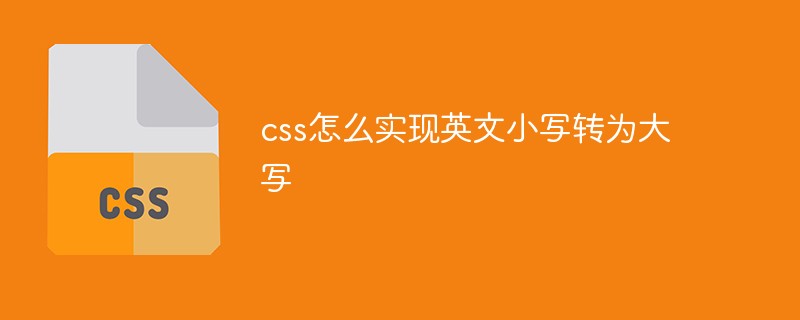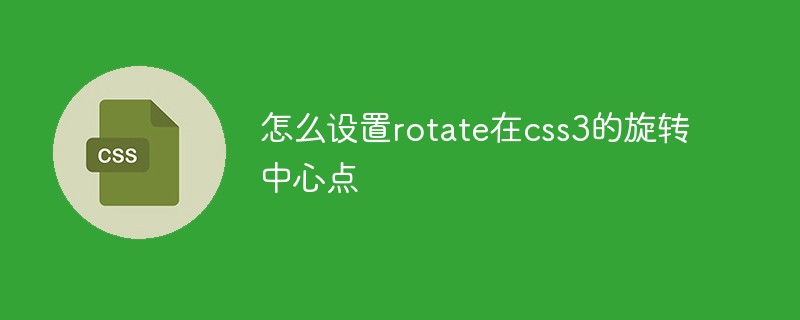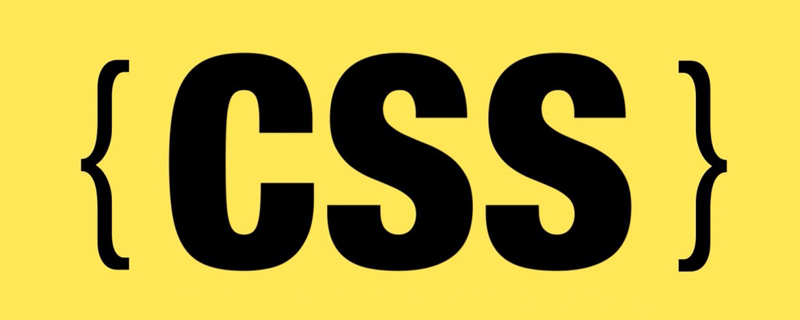 Web Front-end
Web Front-end CSS Tutorial
CSS Tutorial Detailed explanation of how to use CSS:hover pseudo-class selector (with code)
Detailed explanation of how to use CSS:hover pseudo-class selector (with code)In order to make the page dynamic at work, front-end developers often add mouse pass and mouse out effects to the page to make the page more attractive. This article will tell you about the hover event in CSS, how to use CSS:hover,and use code to explain how to use CSS:hover to change color. Friends who are in need, please continue reading.
Careful friends will find that hover is used on almost every website. Hover is generally applied to elements such as buttons, logos, and pictures, but sometimes mouseover and mouseout are also used. Events, but JavaScript is more troublesome. It is recommended to use CSS if it can be solved with CSS, which can improve performance. Next, let’s talk about how to use hover in detail.
1. Definition and usage
Definition: hover can add special styles when the mouse moves over the link.
Usage: selector: hover{attribute: attribute value}
For example:
a:hover{background-color:yellow;}
.aa:hover{color:#FFF; background:#0C0;}
Hover-related pseudo-classes:
The :hover selector can be used on all elements, not just links.
:link selector sets the link style of unvisited pages,
:visited selector sets the style of visited page links
:active selector sets the style when you click the link
Note: To produce the desired effect, :hover must be placed after :link and :visited.
2. CSS:hover method example
Instance description: When the mouse enters the div, the div gradually becomes larger. When the mouse moves out, the div gradually becomes larger. Small, back to the original style. This is achieved using the CSS hover event.
HTML part:
<div class="aa"></div>
CSS part:
.aa{
width: 100px;
height: 100px;
background-color: blue;
-webkit-transition: transform 2s linear;
-moz-transition: transform 2s linear;
-ms-transition: transform 2s linear;
-o-transition: transform 2s linear;
transition: transform 2s linear;
}
.aa:hover{
-webkit-transform: scale(2);
-moz-transform: scale(2);
-ms-transform: scale(2);
-o-transform: scale(2);
transform: scale(2);
}Rendering:


The above is the detailed content of Detailed explanation of how to use CSS:hover pseudo-class selector (with code). For more information, please follow other related articles on the PHP Chinese website!
 css ul标签怎么去掉圆点Apr 25, 2022 pm 05:55 PM
css ul标签怎么去掉圆点Apr 25, 2022 pm 05:55 PM在css中,可用list-style-type属性来去掉ul的圆点标记,语法为“ul{list-style-type:none}”;list-style-type属性可设置列表项标记的类型,当值为“none”可不定义标记,也可去除已有标记。
 css与xml的区别是什么Apr 24, 2022 am 11:21 AM
css与xml的区别是什么Apr 24, 2022 am 11:21 AM区别是:css是层叠样式表单,是将样式信息与网页内容分离的一种标记语言,主要用来设计网页的样式,还可以对网页各元素进行格式化;xml是可扩展标记语言,是一种数据存储语言,用于使用简单的标记描述数据,将文档分成许多部件并对这些部件加以标识。
 css3怎么实现鼠标隐藏效果Apr 27, 2022 pm 05:20 PM
css3怎么实现鼠标隐藏效果Apr 27, 2022 pm 05:20 PM在css中,可以利用cursor属性实现鼠标隐藏效果,该属性用于定义鼠标指针放在一个元素边界范围内时所用的光标形状,当属性值设置为none时,就可以实现鼠标隐藏效果,语法为“元素{cursor:none}”。
 rtl在css是什么意思Apr 24, 2022 am 11:07 AM
rtl在css是什么意思Apr 24, 2022 am 11:07 AM在css中,rtl是“right-to-left”的缩写,是从右往左的意思,指的是内联内容从右往左依次排布,是direction属性的一个属性值;该属性规定了文本的方向和书写方向,语法为“元素{direction:rtl}”。
 css怎么实现英文小写转为大写Apr 25, 2022 pm 06:35 PM
css怎么实现英文小写转为大写Apr 25, 2022 pm 06:35 PM转换方法:1、给英文元素添加“text-transform: uppercase;”样式,可将所有的英文字母都变成大写;2、给英文元素添加“text-transform:capitalize;”样式,可将英文文本中每个单词的首字母变为大写。
 css怎么设置i不是斜体Apr 20, 2022 am 10:36 AM
css怎么设置i不是斜体Apr 20, 2022 am 10:36 AM在css中,可以利用“font-style”属性设置i元素不是斜体样式,该属性用于指定文本的字体样式,当属性值设置为“normal”时,会显示元素的标准字体样式,语法为“i元素{font-style:normal}”。
 怎么设置rotate在css3的旋转中心点Apr 24, 2022 am 10:50 AM
怎么设置rotate在css3的旋转中心点Apr 24, 2022 am 10:50 AM在css3中,可以用“transform-origin”属性设置rotate的旋转中心点,该属性可更改转换元素的位置,第一个参数设置x轴的旋转位置,第二个参数设置y轴旋转位置,语法为“transform-origin:x轴位置 y轴位置”。


Hot AI Tools

Undresser.AI Undress
AI-powered app for creating realistic nude photos

AI Clothes Remover
Online AI tool for removing clothes from photos.

Undress AI Tool
Undress images for free

Clothoff.io
AI clothes remover

AI Hentai Generator
Generate AI Hentai for free.

Hot Article

Hot Tools

SAP NetWeaver Server Adapter for Eclipse
Integrate Eclipse with SAP NetWeaver application server.

MinGW - Minimalist GNU for Windows
This project is in the process of being migrated to osdn.net/projects/mingw, you can continue to follow us there. MinGW: A native Windows port of the GNU Compiler Collection (GCC), freely distributable import libraries and header files for building native Windows applications; includes extensions to the MSVC runtime to support C99 functionality. All MinGW software can run on 64-bit Windows platforms.

VSCode Windows 64-bit Download
A free and powerful IDE editor launched by Microsoft

MantisBT
Mantis is an easy-to-deploy web-based defect tracking tool designed to aid in product defect tracking. It requires PHP, MySQL and a web server. Check out our demo and hosting services.

mPDF
mPDF is a PHP library that can generate PDF files from UTF-8 encoded HTML. The original author, Ian Back, wrote mPDF to output PDF files "on the fly" from his website and handle different languages. It is slower than original scripts like HTML2FPDF and produces larger files when using Unicode fonts, but supports CSS styles etc. and has a lot of enhancements. Supports almost all languages, including RTL (Arabic and Hebrew) and CJK (Chinese, Japanese and Korean). Supports nested block-level elements (such as P, DIV),






